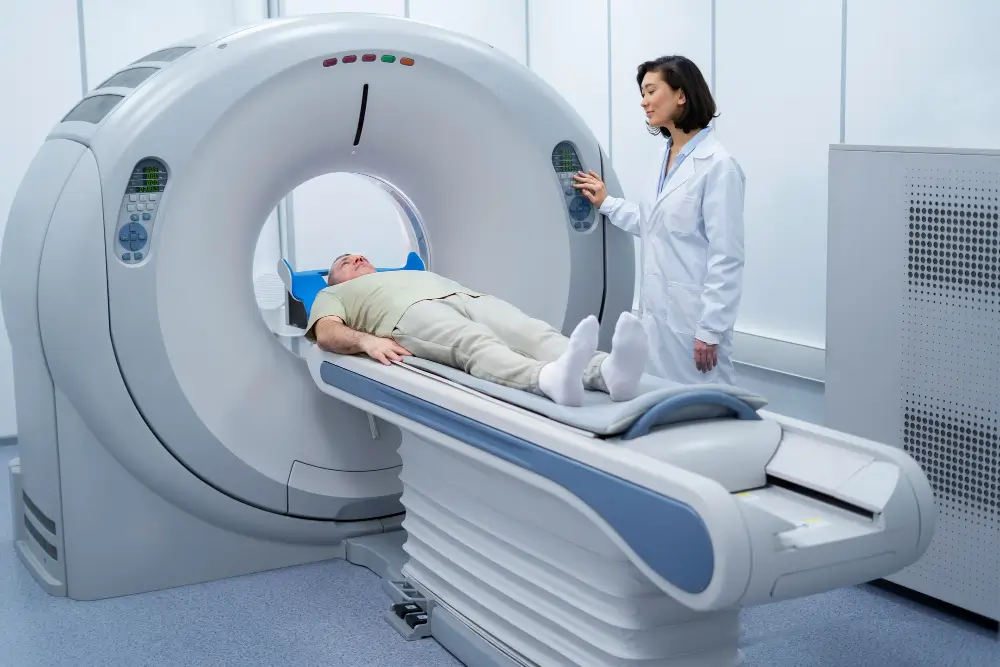CT coronary angiography (CTCA), or ct angiography near me is a non-invasive imaging procedure used to visualize the coronary arteries and show blockages to diagnose heart disease. As we advance cardiovascular diagnostics, CTCA represents an appealing alternative to traditional and invasive forms of angiography. However, one of the most common questions that patients have regarding CT angiography is whether it hurts during the test or not. The answer to this question is no! In this article, we will discuss in detail about what patients can experience in this painless procedure, so that they can make an informed and confident choice regarding the test.

- It is a non-invasive procedure
Unlike traditional coronary angiograms, which involve inserting a catheter into the blood vessels, CT coronary angiograms are non-invasive and painless. A CT coronary angiogram uses a high-speed CT scanner and a contrast dye injected into a vein in the arm to obtain detailed images of the coronary arteries of the patient. Because there are no catheters inserted into the heart or arteries, there is no pain involved. There could be a slight pinch when the IV line is inserted for the contrast dye, but it is usually minimal and brief discomfort. The rest of the procedure involves lying still on a scanning table, which is painless.
- Mild sensations due to the contrast dye
During the ct angiography heart , if there is an iodine-based contrast dye injected into the patient’s vein, it will help enhance the images by highlighting the blood vessels. As the dye enters the bloodstream, some patients report a feeling of warmth throughout the body or a metallic taste in their mouth. These sensations are common and they usually only last a minute or two. The type of contrast may result in mild allergic reactions in some patients, including possibly itching or a rash, but hospitals are well-prepared to provide immediate treatment if required, and serious reactions are extremely rare.
- Painless process of Scan
Patients lie on a table while being moved through a doughnut-shaped machine. The process is quick and often involves just 10-20 minutes. The radiographer may ask patients to hold their breath while capturing the images to help decrease the blurriness caused by patient movement. Some individuals may find lying still or holding their breath uncomfortable, but the actual scan is painless since the scanner is not making any noise, nor is it in physical contact with their body.
- Some medications might be administered before the scan
In some instances, a beta-blocker or other medication is administered prior to the test in order to decrease the heart rate and improve images. Medications administered for this purpose are well-controlled and measured; any symptoms or side effects, such as mild dizziness or tiredness, are generally transient. Medical staff closely monitor patients during all aspects of the process to ensure that patients are comfortable and safe.
- No downtime required
There is no need for any recovery period after having a ct angiography in Mohali. Most patients are able to resume their regular activities right away. The IV is removed, and there are no restrictions on activity unless specifically advised otherwise by the medical team. Patients tend to find the whole experience easy, quick, painless, and without a hitch.
If you are looking for the best ct coronary angiography in Chandigarh or the best ct angiography in Mohali, Sohana Hospital might just be the right option for you. Sohana Hospital Mohali is home to the World’s Most Advanced medical technology and North India’s most trusted and experienced cardiologists and heart specialists who provide the most comprehensive and holistic care for all the cardiological ailments of the patients in the region with a patient-centric approach. Book your appointment today and take the first step towards a healthier life!
